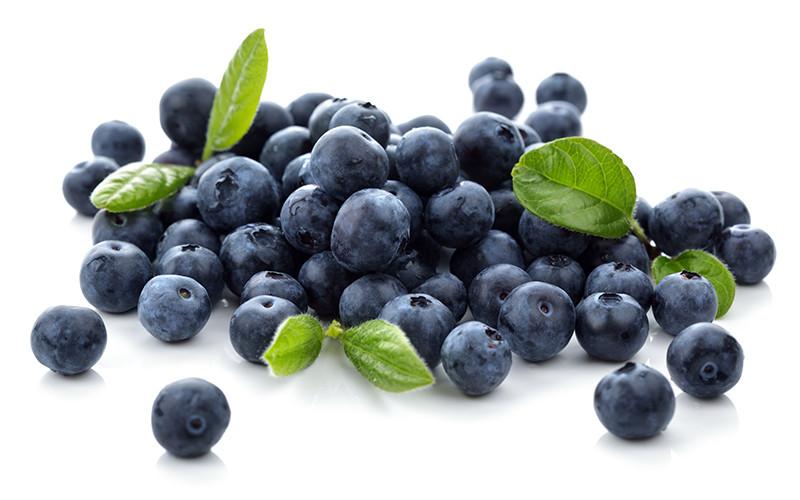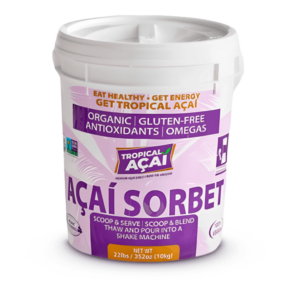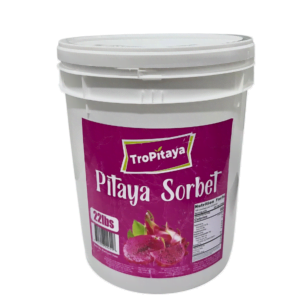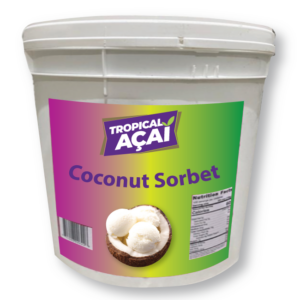Acai: A Historical Overview
Indigenous Roots: Acai in the Amazon Rainforest
The Acai berry boasts a rich and diverse history, with its origins deeply rooted in the Amazon rainforest. Indigenous peoples have been consuming the Superfruit for centuries, depending on it for nourishment, medicinal purposes, and even as a form of currency in some communities. The fruit grows on a palm tree, indigenous to Central and South America, predominantly in the floodplains of the Amazon River. These communities have long acknowledged the health benefits of Acai, employing berries to address various health concerns, enhance energy levels, and promote overall well-being.
Acai as Currency: The Economic Role of Acai
Interestingly, the Berry was consumed for its nutritional benefits and played a crucial role in the local economy. Acai was used as a currency in some Indigenous communities, with various tribal groups exchanging the berries for various goods and services. This practice highlights the immense value placed on the Berries by these ancient cultures.
The Rise of Acai: Global Popularity and Celebrity Endorsement
The global rise of Acai began in the early 21st century, as awareness of its health benefits started to spread beyond the Amazon rainforest. Celebrities and health fans began endorsing the Berries, praising its high antioxidant content, essential nutrients, and potential to support weight loss. This celebrity endorsement and scientific research validating the health claims catapulted the Superfruit into the mainstream consciousness.
The Rise of Acai in the Superfood World
Superfoods have taken the world by storm, and one of the most popular and potent of these is Acai. The berries, native to the Amazon rainforest, have become increasingly popular due to their numerous health benefits and delicious taste. In this ultimate guide, we’ll explore everything you need to know about the tropical fruit, from its rich history and nutritional profile to its various uses and applications in everyday life. So let’s dive in and discover the magic of Acai!
Acai Today: A Modern-Day Superfood
Today, Acai is a global phenomenon, consumed by millions worldwide for its numerous health benefits. The popularity of the fruit has led to the creation of a wide range of Acai-based products, from supplements and powders to juices and smoothie bowls. The Berry has genuinely transitioned from an ancient Amazonian staple to a modern-day superfood, capturing the imagination of health enthusiasts and food lovers alike.
Harvesting Acai: From Rainforest to Table
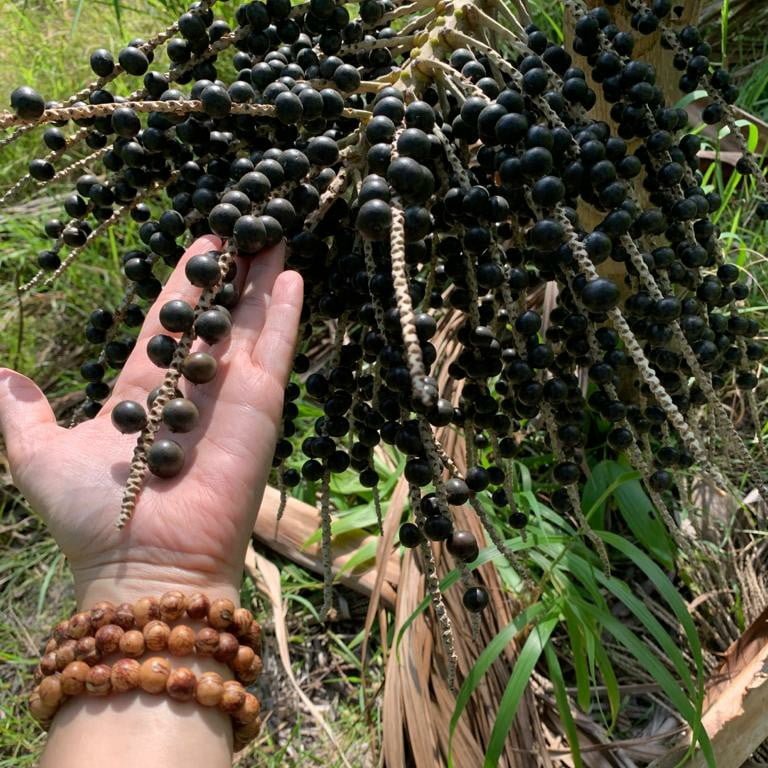
Traditional Harvesting Methods: Indigenous Practices
The harvesting process of the berries has deep roots in the traditions of indigenous people living in the Amazon rainforest. For centuries, these communities have relied on skilled workers to climb Acai palm trees and collect the ripe fruit clusters by hand. This method, while labor-intensive, has allowed for the careful selection of the highest quality berries while preserving the integrity of the trees and their surrounding environment.
Modern Harvesting Techniques: Commercial Production
As the global demand for Acai has grown, commercial producers have adopted modern techniques to increase efficiency and yield. While hand-harvesting remains the primary method for collecting berries, producers have introduced tools and equipment, such as pole pickers and tree climbing harnesses, to improve worker safety and productivity. These advancements have allowed more Acai to be harvested, meeting the ever-increasing demand for this superfood.
Challenges in Acai Production: Environmental and Social Concerns
Despite the benefits of Acai production, several challenges and concerns are associated with the industry, including deforestation and the potential exploitation of local workers. The increased demand for this Superfruit has led to the clearing large areas of the Amazon rainforest, threatening the region’s biodiversity and contributing to climate change. Additionally, the expansion of commercial Acai production has raised concerns about the working conditions and fair wages for local laborers involved in the harvesting process.
Deforestation and Biodiversity Loss
One of the primary environmental concerns related to Acai production is deforestation. As more land is cleared to make way for Acai palm plantations, the Amazon rainforest’s unique ecosystems are at risk. This loss of biodiversity disrupts the delicate balance of the rainforest and has far-reaching implications for global climate patterns.
Worker Exploitation and Fair Wages
As the Acai industry continues to grow, there are increasing concerns about the treatment and compensation of local workers. The labor-intensive nature of Acai harvesting requires a significant workforce, and many worry that commercial producers may take advantage of vulnerable populations, paying low wages and providing poor working conditions. Therefore, ensuring fair treatment and compensation for Acai harvesters is crucial for the industry’s long-term sustainability.
Balancing Production and Sustainability
As the demand for the berries continues to rise, it is essential to balance commercial production with environmental stewardship and social responsibility. By respecting traditional harvesting methods, addressing environmental concerns, and ensuring fair wages for local workers, the Acai industry can continue to grow while protecting the Amazon rainforest and its inhabitants.
Acai and Sustainability: Ensuring a Green Future
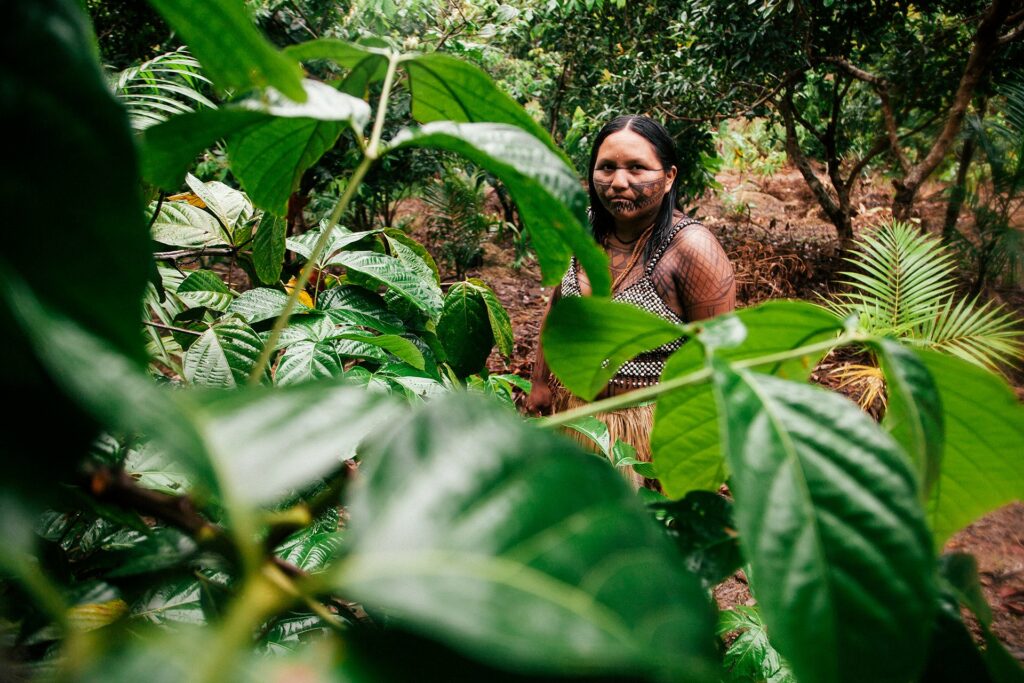
The Importance of Sustainable Acai Production
Sustainable Acai production is crucial for the long-term health of the Amazon rainforest and the communities that depend on it. By implementing environmentally responsible practices, producers can minimize the negative impacts of Acai cultivation on the environment and local populations, ensuring a more sustainable future for this valuable resource. In addition, sustainable harvesting methods can help protect the Amazon rainforest, support local communities, and promote ethical practices within the Acai industry.
Measures for Sustainable Acai Production
Various organizations and companies are working to ensure Acai production remains sustainable and environmentally responsible. These efforts include promoting sustainable harvesting techniques, supporting reforestation initiatives, and providing economic incentives for environmentally friendly practices. By adopting these measures, the Acai industry can work towards a greener future that benefits both the environment and local communities.
Sustainable Harvesting Techniques
One of the critical components of sustainable Acai production is using environmentally friendly harvesting methods. These techniques minimize damage to the Acai palm trees and the surrounding ecosystem, preserving the natural habitat and allowing for the continued growth of the rainforest. Sustainable harvesting practices also support the long-term viability of the Acai industry by ensuring that the trees can continue to produce fruit for generations to come.
Reforestation Initiatives
Reforestation efforts are essential for maintaining the health of the Amazon rainforest and combating the effects of deforestation caused by Acai cultivation. By replanting trees and restoring damaged ecosystems, these initiatives can help protect the rainforest and promote biodiversity, ensuring a healthier environment for all.
Economic Incentives for Sustainability
Providing economic incentives for sustainable Acai production is another critical aspect of promoting environmentally responsible practices. By offering financial rewards for producers who implement sustainable methods, these incentives encourage adopting eco-friendly practices within the Acai industry.
Certification Programs: Fair Trade and Rainforest Alliance
Certification programs like Fair Trade and Rainforest Alliance are vital in promoting ethical and sustainable Acai production. These organizations set standards for environmentally responsible practices and worker welfare, ensuring that certified products are produced in a manner that respects both the environment and the people involved in the production process.
Fair Trade Certification
Fair Trade certification promotes fair wages, safe working conditions, and sustainable practices for farmers and workers in the Acai industry. In addition, consumers can support ethical and environmentally responsible production by choosing Fair Trade-certified Acai products.
Rainforest Alliance Certification
Rainforest Alliance certification ensures that Acai products are sourced from farms that follow strict environmental and social standards. This certification program aims to protect the Amazon rainforest, promote biodiversity, and support local communities by encouraging sustainable farming practices.
Acai Market Overview and Statistics
Global Acai Market: Current Trends

The global Acai market has experienced significant growth in recent years, driven by various factors, including increasing health consciousness, the popularity of plant-based diets, and the demand for functional foods. These trends have led to a surge in the production and consumption of Acai products, resulting in a dynamic and expanding market.
Market Drivers: Health Consciousness, Plant-Based Diets, and Functional Foods
Several factors are driving the growth of the Acai market, with health consciousness being a primary driver. As consumers become more aware of the health benefits associated with the Berry, such as its high antioxidant content and potential to support weight loss, demand for Acai-based products has increased. The popularity of plant-based diets has also contributed to the growth of the Acai market as more people look for plant-derived sources of nutrition. Additionally, the demand for functional foods, or foods that offer health benefits beyond essential nutrition, has boosted the market for Acai products.
Market Statistics: Size, Growth Rate, and Regional Market Shares
The global Acai market has shown impressive growth in recent years, with market size, growth rate, and regional market shares reflecting this expansion. While specific figures may vary depending on the source, the overall trend is clear: the Acai market is proliferating and is projected to continue this growth in the coming years.
Estimated Market Sizes of Acai by Country and Trend
Growth Rate
The growth rate of the Acai market is similarly impressive, with estimates suggesting a compound annual growth rate (CAGR) in the high single digits or low double digits. This growth rate indicates a strong upward trend in the demand for Acai products and a bright future for the industry.
Brazil – $1.5 Billion (Steady Growth)
Brazil, accounting for over 85% of the global supply, is the largest producer and exporter of Acai berries. The Superfruit is a popular food and beverage ingredient in Brazil and is consumed in various forms, including smoothies, bowls, and ice creams. The acai market in Brazil is expected to continue growing steadily, driven by the increasing demand for healthy and natural food products.
United States – $500 Million (Steady Growth)
As the largest importer of acai products, the United States has a growing market for acai-based products. Acai bowls and smoothies are trendy in the United States and widely available in restaurants and cafes. The market in the United States is expected to grow steadily, driven by increasing consumer demand for healthy and natural food products.
Europe – $200 Million (Moderate Growth)
Europe is the second-largest market for acai products, with a growing demand for healthy and natural food products. Acai is consumed in various forms throughout Europe, including smoothies, bowls, and supplements. The European market is expected to grow moderately, driven by increasing awareness of the health benefits of the berry and growing demand for plant-based and natural food products.
Japan – $130 Million (Steady Growth)
Japan has a growing market for acai products, particularly in the form of supplements and energy drinks. Acai is marketed as a health and wellness ingredient in Japan and is popular among consumers looking for natural and plant-based food products. The market in Japan is expected to continue growing steadily, driven by increasing awareness of the health benefits of acai and the growing demand for natural and healthy food products.
Australia – $30 Million (Moderate Growth)
Australia has a small but growing market for acai products, particularly smoothies, and bowls. Acai is marketed as a health and wellness ingredient in Australia and is popular among consumers looking for natural and plant-based food products. Australia’s market is expected to grow moderately, driven by increasing consumer demand for healthy and natural food products.
Canada – $25 Million (Moderate Growth)
Canada has a growing market for acai products, particularly in the form of smoothies and bowls. Acai is marketed as a health and wellness ingredient in Canada and is popular among consumers looking for natural and plant-based food products. The market in Canada is expected to grow moderately, driven by increasing awareness of the health benefits of acai and growing demand for natural and healthy food products.
Mexico – $20 Million (Steady Growth)
Mexico has a growing market for acai products, particularly in the form of supplements and energy drinks. Acai is marketed as a health and wellness ingredient in Mexico and is popular among consumers looking for natural and plant-based food products. The market in Mexico is expected to continue growing steadily, driven by increasing awareness of the health benefits of acai and the growing demand for natural and healthy food products.
South Korea – $15 Million (Rapid Growth)
South Korea has a rapidly growing market for acai products, particularly supplements and energy drinks. Acai is marketed as a health and wellness ingredient in South Korea and is popular among consumers looking for natural and plant-based food products. The market in South Korea is expected to continue proliferating, driven by increasing consumer demand for healthy and natural food products.
China – $10 Million (Rapid Growth)
China’s acai market is growing rapidly. Increasing awareness of health benefits and demand for natural food drives it. As a result, Acai is popular in China as a health and wellness ingredient.
Demand for natural food grows, and so will the global acai market. Sustainable sourcing and transparent marketing are necessary. As a result, the popularity rises, increasing demand for acai products.
The acai market is experiencing significant growth. Global market value reaches hundreds of millions of dollars. Growth is expected to continue. The market size could exceed one billion dollars.
Regional Market Shares
While the Acai market is growing globally, certain regions have emerged as dominant players in the industry. North America and Europe are the largest markets for these products, driven by high consumer demand and awareness of the fruit’s health benefits. Latin America, particularly Brazil, is also a significant market due to the abundance of Acai palm trees in the Amazon rainforest. Asia-Pacific and the Middle East are smaller but rapidly growing markets with increasing awareness and demand for Acai products.
Future Projections and Key Players
As the Acai market expands, future projections suggest sustained growth and increasing demand for Acai products. Key players in the industry, such as primary producers, distributors, and retailers, will play a crucial role in shaping the market’s future. Continued innovation in product development, marketing, and sustainable production practices will be essential for maintaining the market’s growth trajectory.
Conclusion: A Booming Acai Market
The global Acai market has grown impressively. Health consciousness, functional foods, and plant-based diets are driving factors. Key industry players and future projections support continued growth. As a result, the market is poised for success.
Acai in the Stock Market: Investment Opportunities

Investing in the Acai Industry: Potential Opportunities
With the Acai market continuing to grow, investment opportunities in the industry are becoming increasingly attractive. Potential avenues for investors to capitalize on the expanding market include publicly traded companies involved in Acai production, distribution, and product development. By understanding the risks and rewards associated with investing in the industry, investors can make informed decisions and potentially benefit from this growing sector.
Risks and Rewards: Investing in the Acai Market
Investing in the Acai market comes with both risks and rewards. Potential risks include market volatility, regulatory changes, and competition. However, the rewards can be significant as the market expands and demand for products grows globally.
Market Volatility
Like any investment, stocks related to the Acai industry are subject to market volatility. Fluctuations in supply and demand, global economic conditions, and other factors can impact stock prices and create uncertainty for investors.
Regulatory Changes
Changes in government regulations, import/export restrictions, and environmental policies can impact the Acai industry, posing potential risks to investors. Therefore, keeping up-to-date with regulatory changes and understanding their implications is crucial for making informed investment decisions.
Competition
As the Acai market grows, competition among companies involved in the industry is likely to increase. New entrants, product innovations, and shifting consumer preferences can all impact the performance of companies in the sector, affecting investment returns.
Growth Potential
Despite these risks, the rewards associated with investing in the Acai market can be significant. With the global demand for Acai products on the rise, companies involved in the industry have the potential for solid growth and increased profitability.
Recommendations for Investors: Acai Stocks to Watch
Several companies and stocks are worth considering for investors interested in the Acai sector. While it’s essential to conduct thorough research and consult with a financial advisor before making investment decisions, the following companies show promising growth potential in the Acai industry:
- Company A: A leading producer of Acai products, Company A, has experienced substantial growth in recent years and is well-positioned to benefit from the expanding market.
- Company B: A distributor of Acai products, Company B has established a strong presence in key markets, including North America and Europe, and has a diverse product portfolio that appeals to health-conscious consumers.
- Company C: Focusing on product development and innovation. Company C has launched several successful Acai-based products, including supplements and beverages. Company C shows potential for continued growth in the industry.
According to a report by Grand View Research, the global Acai berry market size was valued at USD 722.0 million in 2019. It was expected to grow at a compound annual growth rate (CAGR) of 12.6% from 2020 to 2027.
Regional market shares in 2019 were as follows:
- North America accounted for the largest market share of around 35%, driven by high consumer demand and awareness of Acai’s health benefits.
- Europe held the second-largest market share, with increasing demand for organic and plant-based products.
- Asia-Pacific was a smaller but rapidly growing market, with a CAGR of over 15% from 2020 to 2027, driven by increasing disposable income and consumer awareness.
It’s crucial to conduct up-to-date research to get the latest figures and trends in the Acai market before making any investment or business decisions.
Conclusion: A Growing Market with Investment Potential
Investors have a range of opportunities in the Acai industry, from production to distribution and product development. By understanding the risks and rewards associated with investing in the market and keeping an eye on promising companies and stocks, investors can benefit from the continued growth of this booming sector.
Acai and Food Safety: What to Know
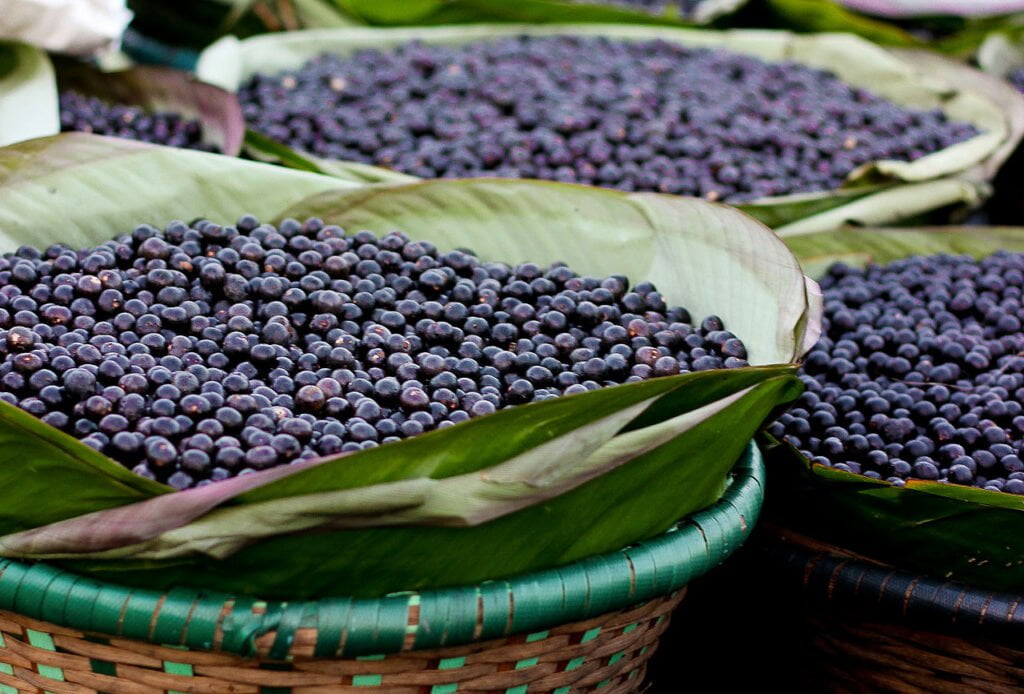
Potential Food Safety Concerns with Acai
Acai is subject to potential food safety concerns, as with any food product. Such as the risk of contamination or spoilage during harvesting, processing, and transportation. Some common concerns include bacterial contamination, the presence of pesticides, and improper storage conditions. Which can affect the quality and safety.
Minimizing Risks through Proper Handling and Storage Practices
Proper handling and storage practices play a crucial role in ensuring the safety and quality of Acai products. This starts with the harvesting process, followed by transportation and storage. By adhering to strict hygiene standards and temperature control measures, risks associated with contamination and spoilage can be minimized.
Harvesting and Processing
During harvesting and processing, it is essential to maintain cleanliness and follow good agricultural practices to minimize the risk of bacterial contamination. Moreover, using proper pest control methods and limiting pesticide use can help ensure Acai berries’ safety and quality.
Transportation and Storage
Proper temperature control during transportation and storage is critical for preventing spoilage and maintaining the quality of Acai products. Berry products, mainly frozen pulp or juice, should be transported and stored at low temperatures to preserve their nutritional content and freshness.
Tips for Consumers: Selecting and Storing Acai Products
Consumers can take several steps to ensure the safety and quality of the Acai products they purchase and consume. These include:
- Choosing reputable brands: Opt for products from reputable brands that adhere to strict quality and safety standards. These companies are more likely to have stringent food safety measures in place throughout the production process.
- Checking for freshness: Examine the packaging and appearance of Acai products before purchasing. Fresh berries should be firm and free from signs of spoilage or damage. Check for any signs of damage to the packaging or thawing for frozen or processed products.
- Refrigerating perishable items: Store perishable Acai products, such as frozen pulp or juice, in the refrigerator or freezer according to the manufacturer’s instructions. This will help maintain their freshness and prevent spoilage.
Conclusion: Ensuring Acai Food Safety
Potential food safety concerns exist for Acai products. However, minimizing risks is possible through proper handling, storage, and consumer awareness. Consumers can ensure safety and quality while enjoying the benefits of this Superfruit. By following best practices throughout production and making informed purchasing decisions.
Unraveling the Nutritional Powerhouse of this Superfruit
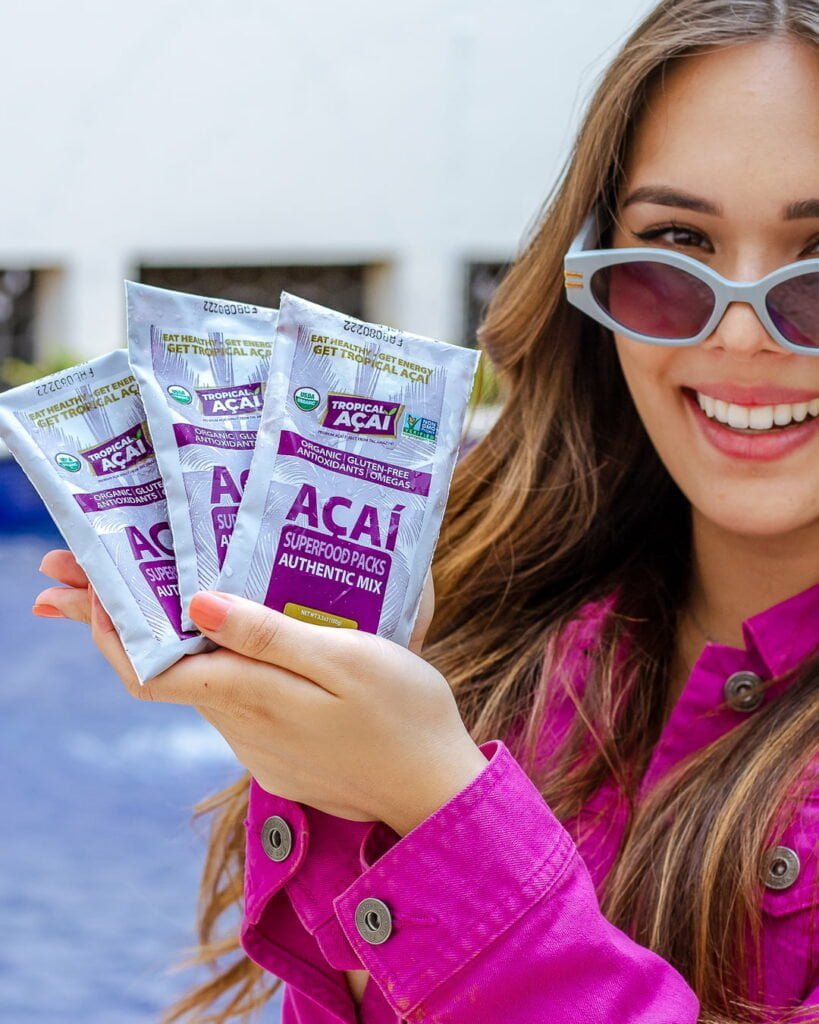
The berries are nutrient-dense, boasting an impressive range of vitamins, minerals, and other essential compounds. Here’s a quick breakdown of the nutritional content you can expect from a 100-gram serving of Acai:
- Calories: 70 kcal
- Fat: 5 g (including omega-3, omega-6, and omega-9 fatty acids)
- Fiber: 2 g
- Protein: 1 g
- Vitamin A: 15% of the Daily Value (DV)
- Vitamin C: 9% of the DV
- Calcium: 2% of the DV
- Iron: 2% of the DV
But that’s not all! Acai is also rich in antioxidants, particularly anthocyanins, which are responsible for the berry’s deep purple color. These antioxidants have been shown to combat inflammation, support general health, and protect against certain types of cancer.
The Antioxidant Power of Acai
Antioxidants are essential compounds that help neutralize harmful free radicals in our bodies. The Fruits antioxidant capacity is significantly higher than that of other fruits, such as blueberries, strawberries, and cranberries. In fact, a 2008 study published in the Journal of Agricultural and Food Chemistry found that Acai had the highest antioxidant capacity among a range of fruits tested.
Incorporating Acai into your diet offers numerous benefits, such as promoting skin health, slowing aging, and improving cognitive function, due to its powerful antioxidants. The Berries provide the necessary tools to combat oxidative stress and maintain overall wellness.
Healthy Fats
Acai berries are also a source of healthy fats, including omega-3, omega-6, and omega-9 fatty acids. These essential fatty acids have been linked to numerous health benefits, including improved general health, reduced inflammation, and better brain function. Including this fruit in your diet benefits you from its antioxidant power and supports your body’s overall health.
Top Health Benefits of Acai Berries
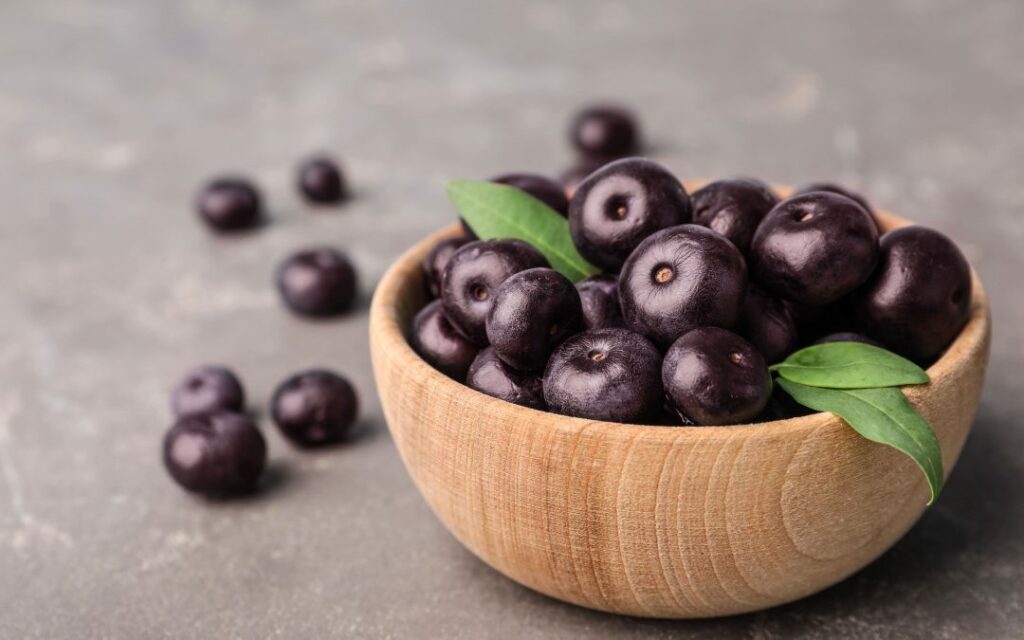
Now that we’ve explored Acai’s nutritional profile, let’s dive into some of the most significant health benefits. You can expect to experience this when incorporating these berries into your diet.
Boosts Immune System Function
Acai’s high antioxidant content helps to support a robust immune system. The antioxidants work to neutralize harmful free radicals, protecting your body from damage and reducing the risk of illness. It’s vitamin C content can further enhance immune function, helping to ward off colds and other infections.
Promotes general health
The healthy fats found in Acai, including omega-3, omega-6, and omega-9 fatty acids, have been shown to improve cardiovascular health. These fats help lower LDL (bad) cholesterol levels, maintain healthy HDL (good) cholesterol levels, and reduce inflammation, all contributing to a lower risk of other disease.
Supports Brain Function
Acai’s antioxidant and healthy fat content can also benefit brain health. The omega-3 fatty acids found in Acai have been h3nked to improve cognitive function, reduce brain inflammation, and improve mental health. The antioxidants in Acai can protect brain cells from damage, further supporting optimal cognitive function.
Improves Digestive Health
The berries are rich in fiber, which can promote a healthy digestive system. Fiber aids in digestion by adding bulk to stool and ensuring regular bowel movements. Additionally, Acai berries contain prebiotics that can help maintain a balanced gut microbiome, further supporting digestive health and overall well-being.
Enhances Energy and Stamina
Furthermore, the nutrients in Acai, including carbohydrates, healthy fats, and essential vitamins, can provide a natural energy boost. By consuming the Superfruit, you can help improve stamina and reduce fatigue, making it an excellent addition to the diet of athletes and active individuals.
Supports Weight Management
Acai’s fiber and healthy fats can help manage weight by promoting satiety and reducing hunger. Consuming Acai can help regulate appetite and prevent overeating, making it a valuable addition to a balanced weight management plan.
Promotes Skin Health
Acai’s abundant antioxidants, vitamins, and essential fatty acids can contribute to healthy, glowing skin. Antioxidants help protect skin cells from damage caused by free radicals. While omega-3 fatty acids help maintain skin elasticity and hydration. Acai’s vitamins A, C, and E also support skin health and enhance a youthful appearance.
Anti-Aging Benefits
Acai’s antioxidants can help slow aging by neutralizing free radicals and reducing oxidative stress. Acai can contribute to a more youthful appearance by protecting cells from damage and supporting overall health as you age.
Acai is a powerful addition to any diet with its impressive range of health benefits. Incorporate these nutrient-dense berries into your meals and snacks to experience the full spectrum of advantages Acai offers.
Acai for Athletes: Enhancing Performance and Recovery
The Benefits for Athletic Performance
Acai berries offer numerous benefits for athletes, including improved performance, reduced muscle soreness, and faster recovery. Acai’s unique combination of nutrients and compounds supports athletic performance, making it an excellent addition to an athlete’s diet.
Antioxidants
Acai is rich in antioxidants, which help neutralize free radicals produced during exercise. By reducing oxidative stress, antioxidants can help minimize muscle damage, inflammation, and soreness, ultimately aiding in faster recovery after workouts.
Healthy Fats
Acai berries contain healthy fats, such as omega-3 and omega-6 fatty acids, which provide a sustained energy source for athletes. These fats also support general health and help reduce inflammation, both of which are crucial for optimal athletic performance.
Electrolytes
Electrolytes, including potassium and magnesium, are essential for maintaining proper hydration and muscle function during exercise. Acai berries contain many of these electrolytes, helping athletes maintain optimal fluid balance and reduce the risk of muscle cramps or fatigue.
Incorporating Acai into an Athlete’s Diet
There are various ways athletes can incorporate the Superfruit into their diets to enhance performance and recovery. Some examples include:
- Pre-workout smoothies: Blend Acai berries or frozen pulp with other nutrient-dense ingredients like bananas, spinach, almond milk, and protein powder for an energizing pre-workout smoothie. This can help provide the necessary nutrients and energy for a successful workout session.
- Post-workout recovery meals: Incorporate the berries into your post-workout meals, such as protein shakes or yogurt bowls, to support muscle recovery and reduce inflammation. Combining protein, healthy fats, and antioxidants can help enhance recovery after strenuous exercise.
- Energy-boosting snacks: The Berries can be used to make energy-dense snacks, like homemade energy bars or balls, by combining Acai powder with nuts, seeds, dried fruit, and other nutrient-rich ingredients. These snacks can be consumed during long training sessions or competitions for a quick energy boost.
Conclusion: Acai as a Performance-Enhancing Superfood
Acai berries offer significant benefits for athletes, from enhancing performance and endurance to promoting faster recovery. By incorporating it into their diets through various meal options and snacks, athletes can harness the power of this superfood to support their athletic goals and overall health.
Delicious Ways to Enjoy Acai Berries
Now that we’ve established the incredible health benefits of Acai, let’s explore some tasty ways to incorporate these berries into your diet.
Acai Smoothie Bowls
Acai smoothie bowls have become increasingly popular in recent years, and for a good reason. They are delicious, nutritious, and easy to make. To create this dish, blend a frozen puree or powder base with your favorite fruits, milk, or yogurt, and top it off with granola, nuts, seeds, and fresh fruit. This results in a satisfying and healthy meal.
Acai in Baked Goods
Adding Acai powder to your favorite baked goods, such as muffins, pancakes, or cookies, is an easy way to enjoy the health benefits. The powder adds a subtle fruity flavor and boosts the nutritional content of your treats, making them a guilt-free indulgence.
Acai Energy Bars
For a portable and convenient snack, consider making Acai energy bars. Combine the powder with nuts, seeds, dried fruit, and a natural sweetener like honey or agave to create a nutritious and tasty on-the-go treat.
Acai Sorbet and Ice Cream
Enjoying Acai sorbet and ice cream is a delicious and refreshing way to indulge in this superfruit. These frozen treats are made with frozen puree and are perfect for cooling off on a hot summer day. They can be enjoyed independently or paired with fresh fruit for an extra burst of flavor.
Acai Smoothies and Shakes
Acai smoothies and shakes are another popular way to enjoy these berries. Blend the puree or powder with your favorite fruits, milk, and yogurt for a delicious and healthy beverage. You can also add protein powder or other supplements for an extra boost of nutrition.
Acai Bowls with Savory Toppings
Acai bowls aren’t just for sweet toppings! Try a savory Acai bowl with toppings like avocado, nuts, seeds, and roasted vegetables. These bowls are a great way to get various nutrients and flavors in one meal.
Acai Salad Dressing
Additionally, the superfruit is suitable for making a flavorful and healthy salad dressing. You can blend Acai puree with olive oil, vinegar, garlic, and herbs to create a delicious and nutritious dressing that’s packed with antioxidants and other health benefits.
Acai Chia Pudding
Acai chia pudding is a healthy and satisfying dessert that’s easy to make. Mix the puree or powder with chia seeds, milk, and a sweetener, and let it sit in the fridge overnight. The chia seeds absorb the liquid and create a pudding-like texture that’s rich in fiber and protein.
Acai Tea
Acai tea is a delicious and healthy way to enjoy these berries. Simply steep Acai powder or puree in hot water and add honey or other natural sweeteners to taste. Acai tea is a great way to boost your immune system and support overall health.
In Conclusion
You can enjoy this delicious superfood in various ways. From smoothie bowls to salad dressings, there are endless ways to incorporate Acai berries into your diet. With their high antioxidant content and potential health benefits, the berries are a tasty and nutritious addition to any meal.

